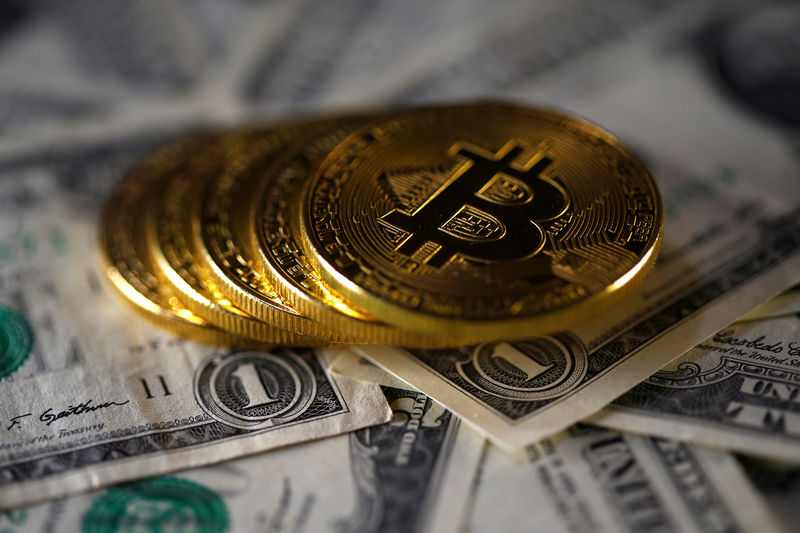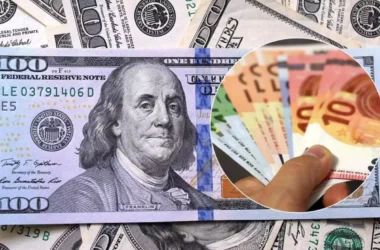When the shares of technology companies soared to sky-high heights in the 1990s, Alan Greenspan, who held the post of chairman of the Fed at the time, called such price behavior “irrational exuberance.” But if you describe the trajectory of digital currencies in recent years, then even such an assessment will sound too soft. What awaits cryptocurrencies in the future, analyst Andy Hecht told Ministry of Finance.
Unbelievable growth in value
In 2010, one bitcoin was worth five cents, and at its recent peak on April 14, it exceeded the mark of $65.5 thousand. Just one dollar invested in 2010 would now bring more than $1.3 million.
Another example: in October 2015, one Ethereum token cost about 55 cents. $100 invested at that time by May 6 of this year (when the peak was recorded at $3,642.25) would have turned into more than $660,000.
However, it is worth remembering that even the incredible capitalization of digital currencies of $2.4 trillion (at its peak) was only slightly more than the value of the most expensive company traded on the open market, Apple. As of the end of last week, Apple was valued at $2.085 trillion.
Digital currencies are a kind of “libertarian” response to state control over the money supply. Many consider these markers to be a product of the high-tech era, reflecting a shift in the direction of financial technologies (fintech).
We talk about “irrational wealth” in cases where the increase in the value of an asset creates an atmosphere of greed and forces market participants to invest in tokens and hope for a rally comparable to the rise of Bitcoin. The most recent example is the Dogecoin currency, which was originally nothing more than a joke.
At the end of 2020, Dogecoin traded well below a cent, and by the end of last week, one token was already worth more than 54 cents. The market capitalization of the currency exceeded 70 billion dollars, which brought it to the fourth step of the cryptocurrency “hit parade”, and this is no longer a joke.
Every day, the degree of recognition of digital currencies is increasing, and regulatory bodies in the US and Europe will have to decide on their classification. Time will tell whether the asset class is a bubble or a revolution that will change the nature of global money flows.
Promotion of cryptocurrencies
In 2017, the Commodity Futures Trading Commission allowed the Chicago Mercantile Exchange and other venues to list bitcoin futures, defining the digital currency as a commodity. Difficulties in classification are explained by the fact that cryptocurrencies, which at the same time have characteristics similar to commodities, are subject to increased volatility, and are also an instrument of exchange, which has a lot in common with classical currencies. Cryptocurrencies are unique, which makes it difficult for traditional market theorists to evaluate them.
However, few would dispute the fact that blockchain technology has revolutionized payment processing and record keeping. The tokens that spawned fintech are a different matter.
In 2017, JP Morgan Chase CEO and Chairman James Dimon called bitcoin a “fraud,” vowing to fire any employee at his bank caught trading in bitcoin or other new instruments.
World-renowned value investor Warren Buffett, who heads Berkshire Hathaway, described BTC as “rat poison in a square.”
But four years later, JP Morgan Chase is offering its best clients to invest in digital currency, and Buffett continues to stick to his beliefs. This month, his partner Charlie Munger called digital currencies “disgusting and against the interests of civilization.”
Bitcoin and Ether futures contracts are now trading on the Chicago Stock Exchange. On May 3, the exchange launched bitcoin microcontracts with lower margin requirements to expand the market.
Security Issues
No one calls cryptocurrencies a unique asset class. Meanwhile, demand for bitcoin and other currencies (of which there are more than 9,820) continues to grow, and the relevant authorities will have to decide on their classification before they can begin to effectively regulate them. One of the main obstacles on this path is the philosophy behind cryptocurrencies, or rather, the elimination of centralized control over the money supply.
This ideology will be very difficult to overcome. And even if this problem can be solved, storage and security issues will remain.
At first glance, the recent cyber attack on the Colonial Pipeline, which disrupted gasoline supplies to the East Coast of the United States, has nothing to do with cryptocurrencies. However, it reflects the ability of hackers to break into systems that are critical to the country’s national security.
The security of wallets that hold trillions of dollars worth of currency is a serious issue facing regulatory bodies tasked with “protecting society.” Moreover, the loss of control over the money supply is definitely not in the interests of governments, because the ability to adjust and interest rates, influencing the yield on the national debt and regulating the amount of currency in the financial system is the most important tool of monetary and budget policy. And against this background, the regulator will have to make decisions about assets that hardly fit into the existing regulatory verticals.
Blockchain is changing business
Blockchain technology is at the core of the entire class of digital currencies, but it has also found application in fintech. Essentially, a blockchain is a distributed and public log of records (such as transactions).
In the example of Bitcoin: every transaction carried out by network participants is recorded in immutable “blocks”. Almost all cryptocurrencies are built on the basis of blockchain, but the technology has other areas of application.
Blockchain payments are more secure than standard debit or credit card transactions. Moreover, accuracy is ensured by enormous computing power, which increases the speed and efficiency of payment systems.
Blockchain also eliminates the need for middlemen. At the same time, confidential information is omitted during the formation of blocks, which ensures a certain level of personal protection. And while no system is completely foolproof, blockchain has become a key concept in fintech, transforming outdated business models.
Controller output
The US Securities and Exchange Commission (SEC) is sure to lead the process, but it may not be enough.
SEC Chairman Gary Gensler is far from a newcomer to fintech. As chairman of the Commodity Futures Trading Commission (CFTC) under the Obama administration, Gensler approved the launch of bitcoin futures in late 2017. During the break, he managed to work as a professor of global economics and management at the Sloan School of Management at the Massachusetts Institute of Technology, teaching a fintech course.
The head of the SEC cannot be called the one who can single-handedly shape the regulatory protocol for cryptocurrencies. However, as interest in the sector grows, more and more companies are accepting cryptocurrency as payment.
The SEC is currently reviewing applications to launch ETFs and ETNs. And the emergence of new tools is likely to be the impetus for a jump in the volume and liquidity of the cryptocurrency market (both for traders and investors).
Federal Reserve Chairman Jerome Powell’s position on the digital dollar will likely also determine the SEC’s approach to the issue. In late April, Powell said it was important to take your time and get things “right.”
The SEC is in no rush to approve ETFs and ETNs because it is trying to determine exactly which financial vertical cryptocurrency belongs to. We wouldn’t be surprised if the regulator tries to flip the “hot potato” and recommends the formation of a new body to oversee the fintech industry, independent of the CFTC and the SEC.
The United States is the leader of the world economy, but cryptocurrencies go beyond any borders. Any regulatory effort will be incomplete without transnational coordination and cooperation. But while the US, EU, UK and Japan are likely to cooperate in regulating digital currencies, China, Russia and other countries could become a problem.
Forming a supranational approach to the issue will be like trying to keep a dozen kittens in one basket. Global harmony is an impossible dream.
Issues of state importance
If Charlie Munger has his way, governments will outlaw digital currencies. However, while US Treasury Secretary Janet Yellen and European Central Bank President Christine Lagarde constantly refer to the possibility of fraudulent use of digital currencies, their real motivation is likely to be to preserve power over the money supply.
Governments maintain the status quo, refusing to move to a global market that goes beyond their influence and political power. However, China continues to implement the digital yuan. The USA and the EU will probably follow suit (although not immediately).
Meanwhile, governments and regulators are key to reducing volatility. The higher the market capitalization of the asset class, the higher the need for regulation.
However, any negative events give the regulators a reprieve. The hacking of the Mount Gox exchange in 2014 slowed down the growth of Bitcoin for several years. The hacking of Colonial Pipeline was another warning to everyone who keeps money in electronic wallets.
I single out three important aspects of the fintech revolution and cryptocurrency rally:
- Blockchain is a product of the evolution of the financial sector, not a revolution.
- The growing number of companies and platforms that accept tokens as payment only contributes to the growth of the market and supports the status of cryptocurrency as a means of exchange.
- Parabolic price movements clearly indicate the presence of a speculative element.
Human nature pushes us into markets that offer fantastic and easy money (no matter how plausible the prospects look). In my life, I saw m








